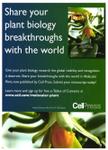Compartmentalized Metabolic Engineering for Artemisinin Biosynthesis and Effective Malaria Treatment by Oral Delivery of Plant Cells
Compartmentalized Metabolic Engineering for Artemisinin Biosynthesis and Effective Malaria Treatment by Oral Delivery of Plant Cells作者机构:Metabolic Engineering Group Malaria Research Group International Centre for Genetic Engineering and Biotechnology Aruna Asaf Ali Marg New Delhi 110067 India Department of Biotechnology Jamia Millia Islamia New Delhi 110025 India Department of Horticulture and Crop Science The Ohio State University Wooster OH 44691 USA Department of Biochemistry School of Dental Medicine University of Pennsylvania Philadelphia PA 19104 USA
出 版 物:《Molecular Plant》 (分子植物(英文版))
年 卷 期:2016年第9卷第11期
页 面:1464-1477页
核心收录:
学科分类:0710[理学-生物学] 1007[医学-药学(可授医学、理学学位)] 071010[理学-生物化学与分子生物学] 100705[医学-微生物与生化药学] 081704[工学-应用化学] 07[理学] 08[工学] 0817[工学-化学工程与技术] 10[医学]
基 金:supported by the Department of Biotechnology Department of Science and Technology to S.K NIH to H.D
主 题:bioencapsulation oral delivery of plant material dihydroartemisinic acid isopentenyl pyrophosphate,plant transformation drug biosynthesis
摘 要:Artemisinin is highly effective against drug-resistant malarial parasites, which affects nearly half of the global population and kills 〉500 000 people each year. The primary cost of artemisinin is the very expensive process used to extract and purify the drug from Artemisia annua. Elimination of this apparently unnecessary step will make this potent antimalarial drug affordable to the global population living in endemic regions. Here we reported the oral delivery of a non-protein drug artemisinin biosynthesized (~0.8 mg/g dry weight) at clinically meaningful levels in tobacco by engineering two metabolic pathways targeted to three different cellular compartments (chloroplast, nucleus, and mitochondria). The doubly transgenic lines showed a three-fold enhancement of isopentenyl pyrophosphate, and targeting AACPR, DBR2, and CYP71AV1 to chloroplasts resulted in higher expression and an efficient photo-oxidation of di- hydroartemisinic acid to artemisinin. Partially purified extracts from the leaves of transgenic tobacco plants inhibited in vitro growth progression of Plasmodium falciparum-infected red blood cells. Oral feeding of whole intact plant cells bioencapsulating the artemisinin reduced the parasitemia levels in challenged mice in comparison with commercial drug. Such novel synergistic approaches should facilitate low-cost production and delivery of artemisinin and other drugs through metabolic engineering of edible plants.



